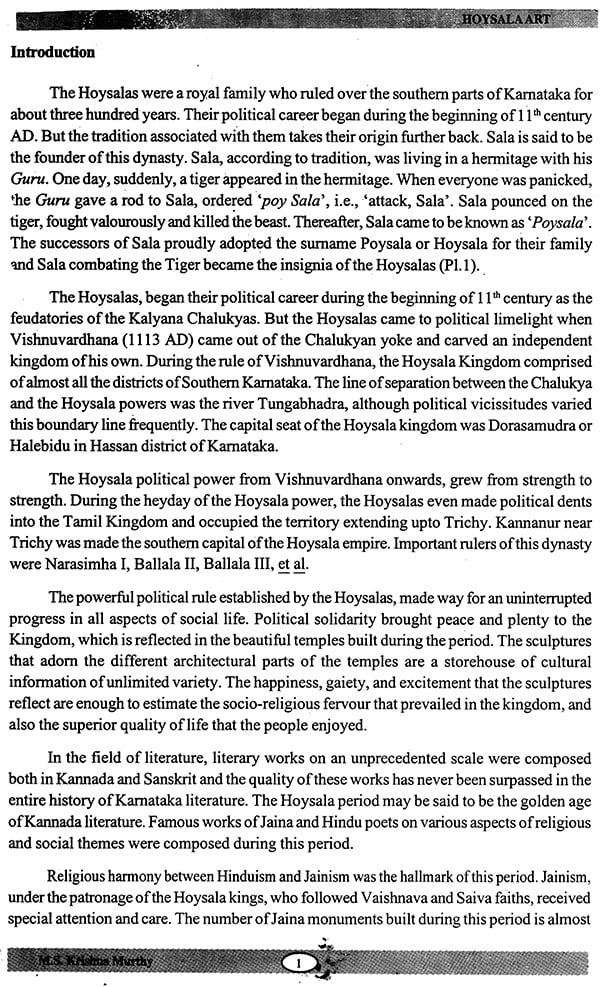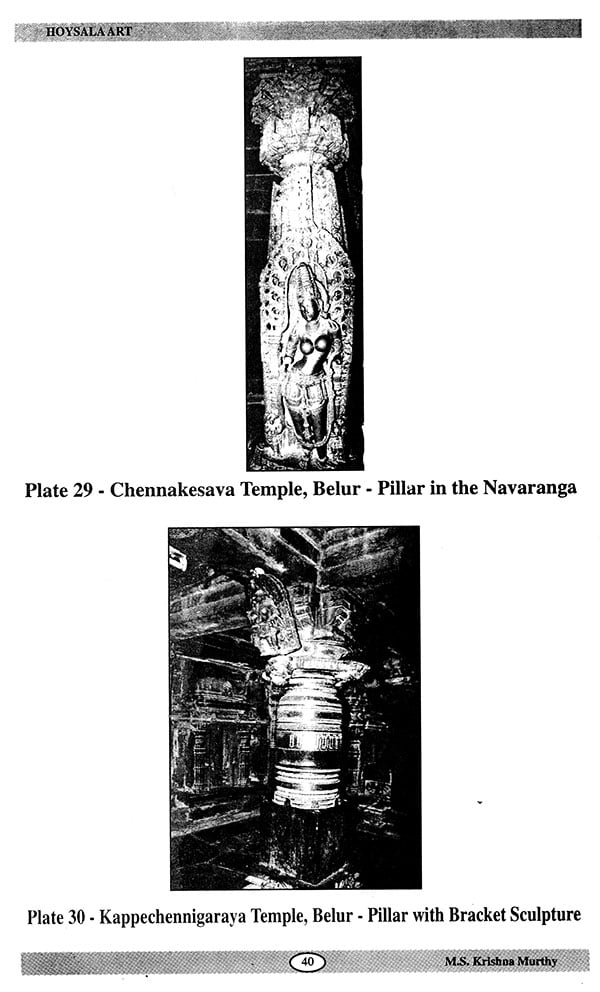
The Hoyasala Art
Book Specification
| Item Code: | NAX151 |
| Author: | M.S. Krishna Murthy |
| Publisher: | Dravidian University Campus |
| Language: | English |
| Edition: | 2007 |
| Pages: | 42 (Throughout B/W Illustrations) |
| Cover: | PAPERBACK |
| Other Details | 11.00 X 9.00 inch |
| Weight | 160 gm |
Book Description
That the foundations of Indian culture were deeply imbedded in Dravidian culture is now an incontrovertible fact. Dravidian culture is one of the most ancient cultures of the world, Those cultures, slightly contemporaneous to one another, slowly started fading out. However, the primordial Dravidian culture continues to thrive without losing its quintessence despite the apparent changes in systems of dress and address.
Dravidian University was established in 1997 to mirror the real and rich picture of Dravidian culture not only in its linguistic, literary, cultural and philosophical facets but in science and technological angles also.
At a time when no special attention worth its name was paid by the Centre with regard to language, the Southern states except Kerala, had established all by themselves their own Universities - Telugu, Tamil and Kannada - to research on their languages and cultures.
The Government of Andhra Pradesh toak a step ahead and started Dravidian University, with the co-operation of the sister states, to research and reflect on the inherent oneness of the cultures of the four states whose languages number up to 27. Its endeavour is to promote unity and amity in the family of several languages. The main objectives of Dravidian University are to augment the common weal. and social well being of the communities of marginal languages and to build bridges among the Southern states. While working on each language separately in varied areas, it aims at a synthesis and a discovery of the common heritage through Comparative Studies.
Prasaranga and Anusrjana (Translation Bureau) are the two most significant wings of the University from out of its several on going progressive activities.
The history of art is the history of mankind. Temple art is a manifestation of man’s aspiration for realization of truth and beauty, Call it church or synagogue, mosque or mandir -all give out the call of man for a better self, a superior soul, a more refined and cultured cult. All temples are houses of prayer built prayerfully. Such houses are built in beauty and structured in strength for solidarity. Being beautiful, they are useful too. So they have ‘beautility’.
Temple art is the configuration of several sciences - anatomy, geometry, engineering, metallurgy, astronomy, soil technology, ecology and the rest, The hands are the main tools of an architect. When the temple is built, man offers his prayers with folded hands, He celebrates life in the temple with song, music, dance and performance.
The rule of the Hoysalas in Southern Karnataka is, undoubtedly, the best period of Karnataka cultural History. Every aspect of socio-cultural life of the people of this region witnessed the best period of its existence under the patronage of the Hoysalas. In the field of temple art and architecture, the progress achieved was indeed incredible. It is estimated that during this period, not less than 1500 temples were built throughout the Hoysala Empire. This indeed, is a true reflection of the religious fervour of the Hoysala Society. Saiva, Vaisnava and Jaina creeds peacefully co-existed under the Hoysalas and the religious edifices of these creeds were built almost in equal numbers.
Ti temple art of the Hoysalas has been a subject of unending interest to the connoisseurc of Indian art. Notable among the researchers on Hoysala Art are J.Fergusson, Henry ‘isens, Percy Brown, R.Narasimhachar, M.H. Krishna and S. Settar. The annual reports of the Mysore Archaeological Department provide ample material for the study of Hoysala art. But the most comprehensive and critical study on the Hoysala Art is the latest book on the Hoysala Temples (in two Volumes), written by Dr.Settar (Bangalore 1991).
After going through all these works on the Hoysala Art, J found that it is necessary to explain, in a detailed manner, all the salient characteristic features pertaining still to Hoysala temple architecture and sculpture, with suitable notes, in a simple manner. When my ideas of Hoysala temple architecture were getting crystallized, the Dravidian University, Kuppam, invited me to deliver its First Foundation Day Lecture on Hoysala Art. A slightly elaborated version of the two lectures that I gave on Hoysala Art is presented here for the use of the researchers in the form of a book.
I am highly grateful to the Honourable Former Vice-Chancellor of Dravidian University, Dr. Sri Hari and his associates, for inviting me to deliver the First Foundation Day Lecture and their interest in publishing the Lecture in the form of a book.
I am also grateful to the authors of the works mentioned at the end, who, in many ways, have helped me in formulating certain ideas and concepts relating to Hoysala temple art.
Most of the photographs in this book were provided by Dr. R.H.Kulkarni and a few were supplied by Sri K.Prabhu. I hereby express my sincere thanks to them. The line drawings of the ground plans are taken from the Annual Reports of the Mysore Archaeological Department. I am highly indebted to the authorities concerned of the Government of Karnataka for the same.









